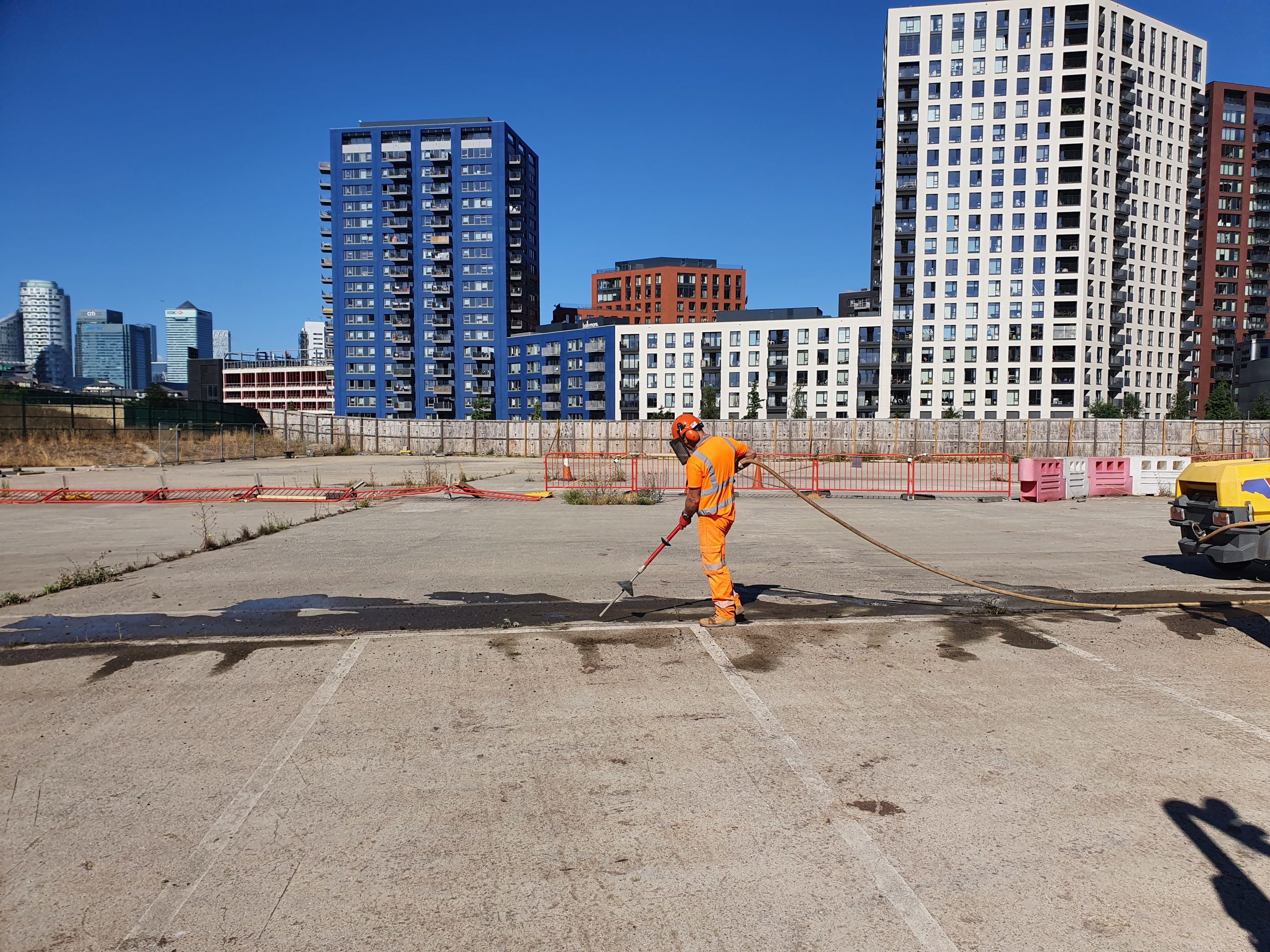PROJECT EXAMPLE: Using an Air-Spade to extract debris and Giant hogweed seeds from drains and hard standing
THE BRIEF
A large site planned for development near the Thames – we were contracted to reduce the volume of Giant hogweed growth across the site and treat occurrences of Japanese knotweed. The scope of works was inclusive of vegetation management, herbicide treatment and removing dispersed Giant hogweed seeds.
THE CHALLENGES
The biggest challenge was the site itself. Giant hogweed plants were most prevalent on a steep bank above a Thames tributary river. Work required a safety team, ground anchors, ropes and harnesses. Vegetation management included removing vegetation from areas possessing live Rail services. We also needed to remove Giant hogweed seed harbouring soils deposits over a large central area of hardstanding.
OUR PLAN
An Air-Spade is a compressed air jet tool we typically use for extracting invasive plants rhizomes/ roots from ground where mechanical digging is difficult, unsafe, or prohibited due to the presence of underground services or tree roots (from trees to be retained). On this project, the air-spade was deployed in a slightly different way to lift/extract debris from within ground gutters/drains, concrete expansion gaps, and general hard surface depression and grey water collection areas.
The debris was removed as it was harbouring Giant hogweed seeds that had collected in these areas after being wind dispersed across the extensive hard standing area of the site adjacent to a riverbank and railway siding infested with flowering Giant hogweed plants.
REMOVING SEED HARBOURING SOILS
There was an initial proposal to use a pressurised steam jet-washer on the basis it may heat sterilise Giant hogweed seeds. This was not implemented as it was deemed that the brief amount of time the steam would be in contact with the seed would be in-effective to sterilise the seed. Also because the Steam jet-washer was likely to be less efficient than the Air-Spade at extracting the seed harbouring debris from the gutters/gaps. The method of physically removing seed harbouring soils, along with herbicide treatment and control of the main infestation areas, was planned and programmed to help significantly reduce the volume of Giant hogweed plant germination before proposed re-development of the site. Saving time and cost in reducing the scope of remediation works to remove Giant hogweed contamination under development.
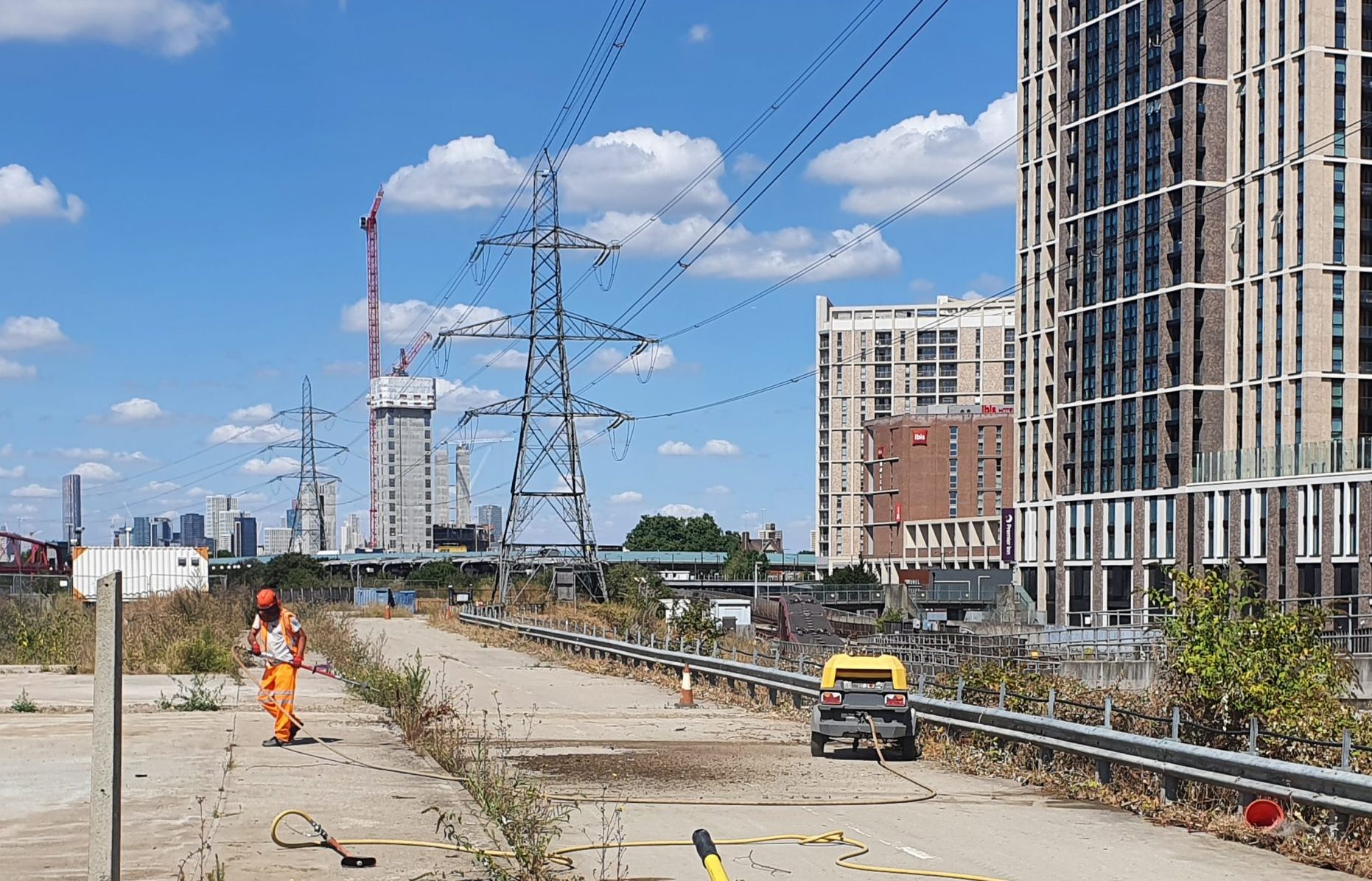
Using the Air-Spade onsite
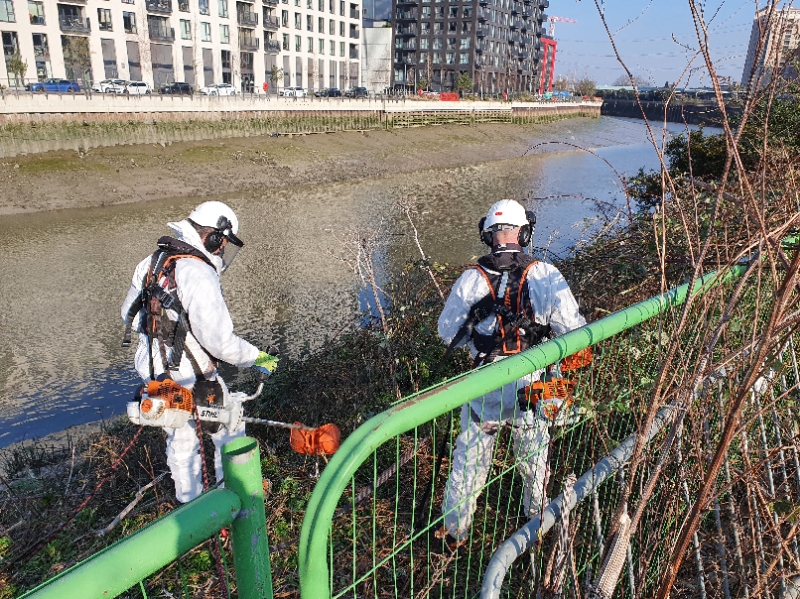
Strimming to clear the ground along the river edge
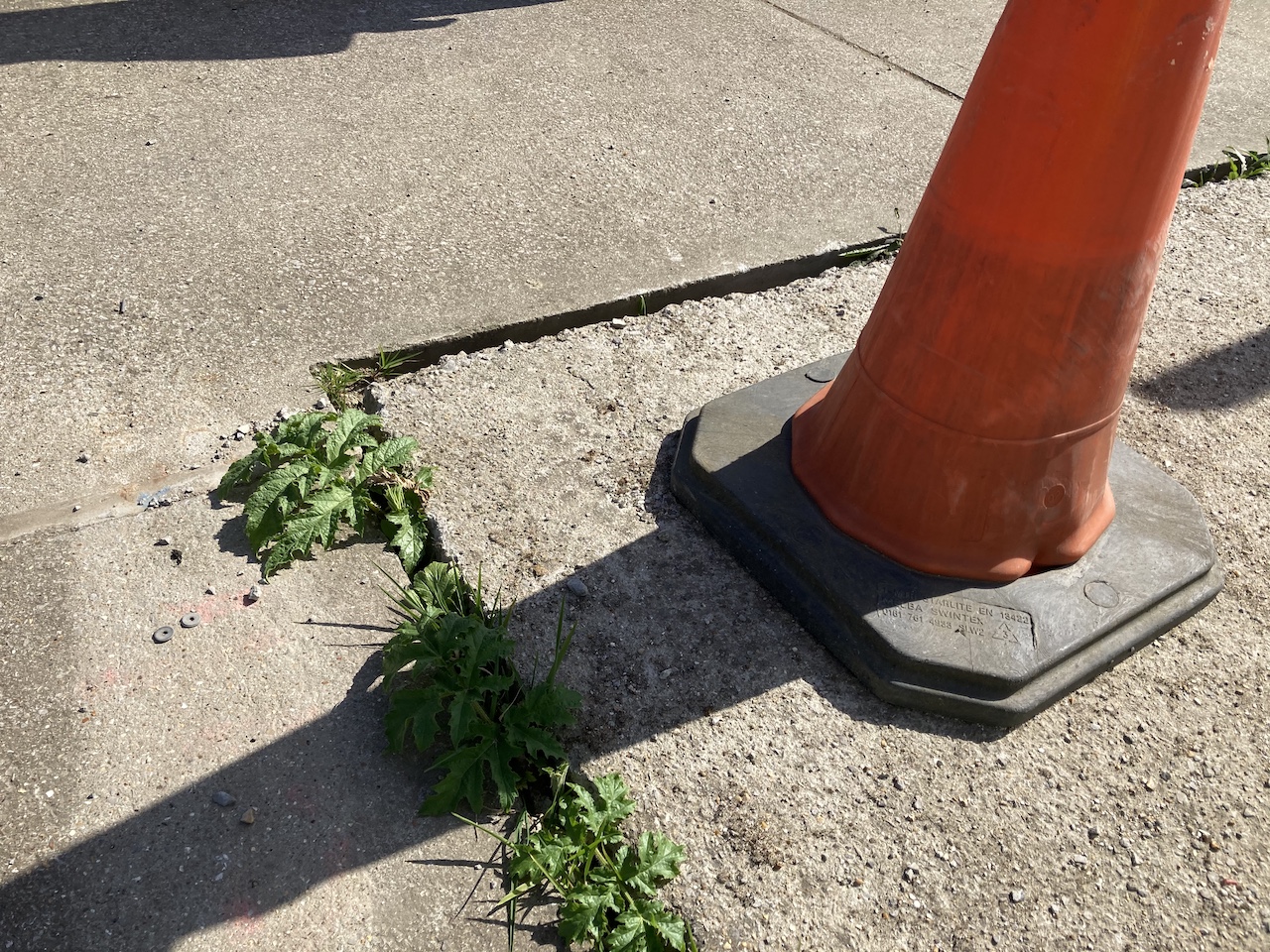
Giant hogweed growth
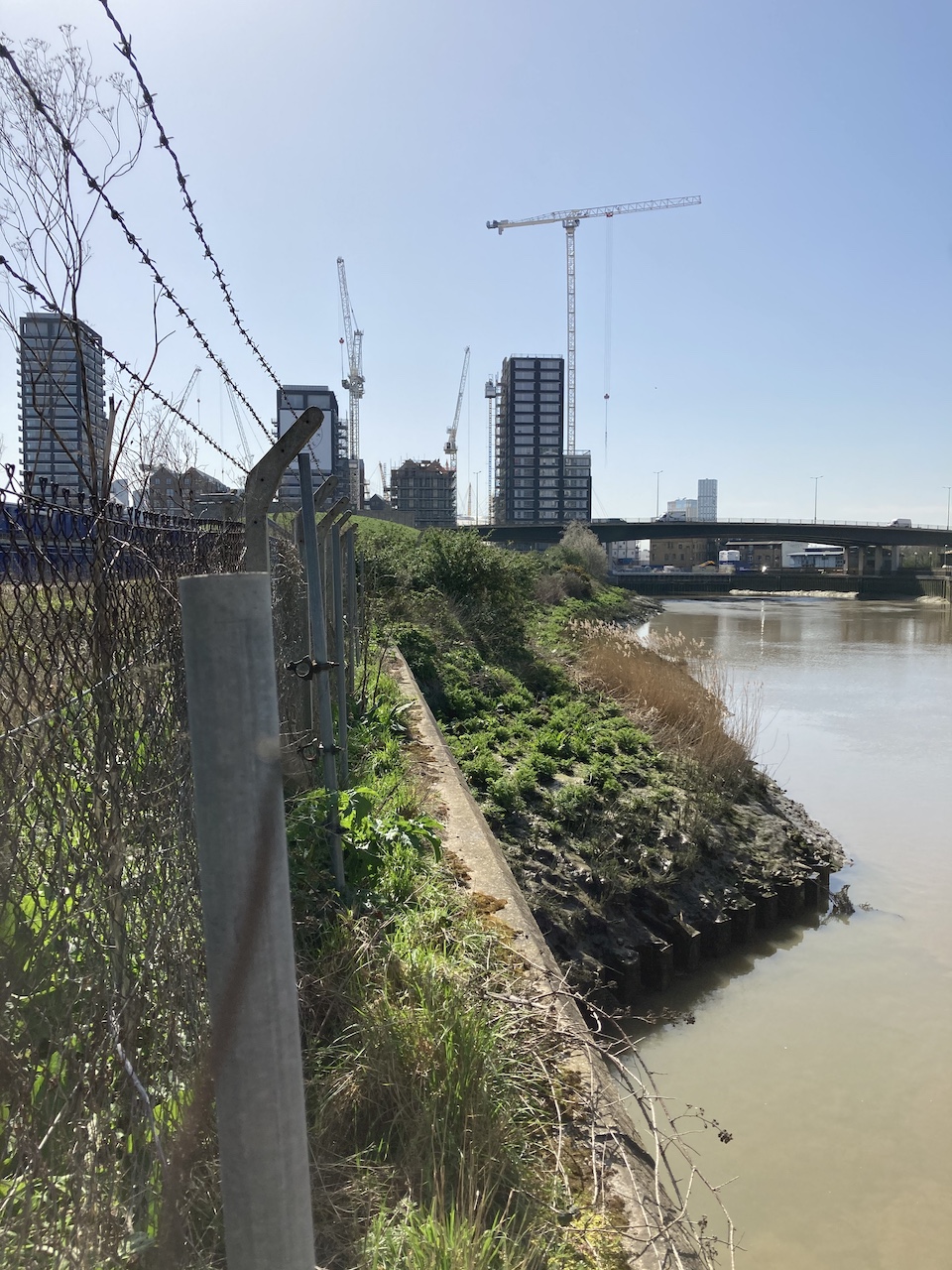
The advantages of using Air-Spade:
- Faster and less strenuous than hand excavation.
- No sharp metal edges.
- Harmless to buried, solid objects such as pipes, cables, lines, vegetation and tree roots.
- Enables hard and rocky surfaces to be excavated.
- Breaks soil into small particles.


